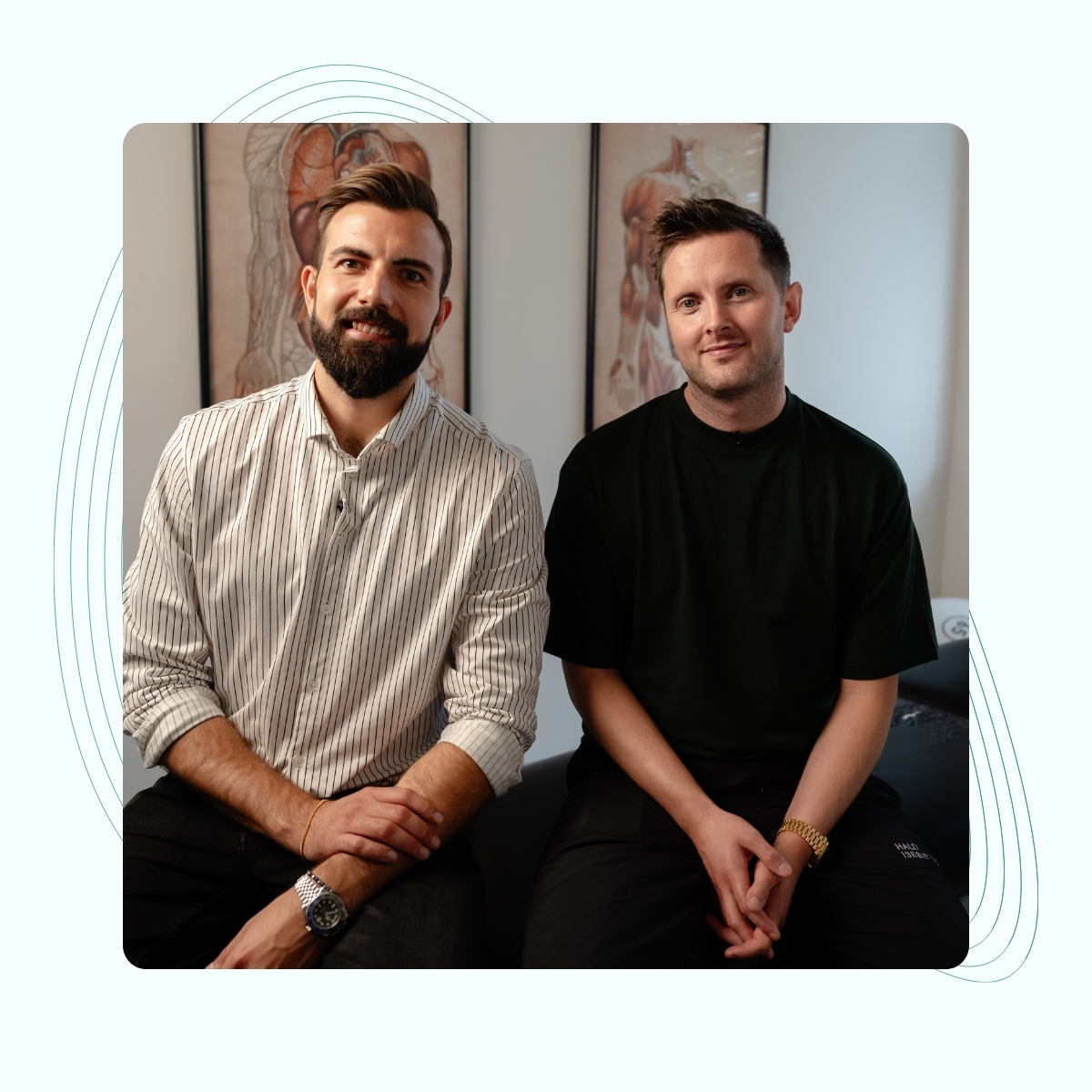We treat
Facet joint syndrome
Learn more about facet joint syndrome & its complications
Facet joint syndrome in the lower back
Low back pain is the most common cause of sick leave from work in the world. Among people who have chronic low back pain – i.e. pain in the lower back that has lasted more than three months – facet joint syndrome is estimated to be part of the cause in between 15 and 45% of cases. If you have had a backache or pain in the lower back, then facet joint syndrome could be the cause. To understand why it can be a possible cause of pain and backache in the back, it requires an understanding of what a joint is and what a facet joint is. A joint is the connection between two or more bones. In the spine, the vertebrae are connected, among other things, via facet joints – the underlying vertebra with the vertebra above – both in the lower back, thoracic spine and neck. The facet joints are located on the back and on both sides of the spine. Pain related to one of these joints is called facet joint syndrome.
Jump to section [Vis]
What’s wrong with the facet joint?
There can be several causes of facet joint syndrome: One cause can be the synovial membrane or joint capsule. And what is that? In order for the joint to move and us to move our back, the joint is lubricated with synovial fluid, so that the cartilage that covers the joint surfaces is loaded as little as possible. This joint fluid is surrounded by a membrane called the synovial membrane, in which the joint fluid, also called synovial fluid, is located. This membrane can sometimes get pinched between the joint surfaces of each bone and create “facet joint syndrome” and cause back pain. The same can happen to the joint capsule – a fibrous capsule made of ligaments that surrounds the joint between the two bones and stabilizes the joint.
Another cause, which is the most common cause of facet joint syndrome, is osteoarthritis, that is, the cartilage that covers the ends of the bones that move against each other and create a “joint” has worn away. Meaning, the part of the vertebra that is connected to the vertebra above or below. In cartilage, there are no nociceptors – i.e. receptors that pick up a potential pain signal from an injury, which is ultimately registered in the brain along with many other stimuli, and can ultimately turn into pain. Because there are no nociceptors in cartilage, it does not hurt when joint surfaces covered with cartilage slide against each other – but it can hurt if the cartilage is worn away and the bone tissue that lies under the cartilage slides against other bone tissue. However, it must be said that pain is complex and that injury does not always cause pain. For example, it is known that at approximately every third person has wear-related changes in the back without having pain. Most of us probably know when you notice a bruise, or that you bleed after cutting vegetables, without being able to remember the time you cut or hurt yourself. Therefore, you need to look at the whole person in the examination and treatment of pain, which is why we at Osteonordic are well equipped to help with your pain, based on a holistic approach.
Sources: Curtis L, Shah N, Padalia D. Facet Joint Disease., Hertling DK, R. M. Management of Common Musculoskeletal Disorders., Souza T. Differential Diagnosis and Management for the Chiropractor, Kean WF, Kean R, Buchanan WW. Osteoarthritis and Brinjikji W, Luetmer PH, Comstock B, Bresnahan BW, Chen LE, Deyo RA, et al. Systematic literature review of imaging features of spinal degeneration in asymptomatic populations

How to diagnose?
It is difficult to diagnose facet joint syndrome with 100% certainty, and in a clinical context it is easier to rule out the diagnosis than to confirm it. However, a thorough examination with questions and various tests, including an examination of whether your problem is related to nerve compression or not, can determine whether it is more or less likely that your symptoms originate from facet joint syndrome, and whether you would benefit from treatment by an osteopath or osteopath student.
Sources: Curtis L, Shah N, Padalia D. Facet Joint Disease and Maas ET, Juch JN, Ostelo RW, Groeneweg JG, Kallewaard JW, Koes BW, et al. Systematic review of patient history and physical examination to diagnose chronic low back pain originating from the facet joints.
Facet joint syndrome between the shoulder blades
Pain from facet joint syndrome can feel like a sharp, stabbing sensation and can occur in the lower back, neck or upper back, including between the shoulder blades. Pain between the shoulder blades can be caused by facet joint syndrome in the neck, as facet joint syndrome in the lower cervical vertebrae can radiate pain down between the shoulder blades.
Source: Cooper G, Bailey B, Bogduk N. Cervical zygapophysial joint pain maps.

Duration of facet joint syndrome
The duration of facet joint syndrome can vary greatly depending on the underlying cause and the effectiveness of treatment. In some cases, facet joint syndrome can resolve quickly with conservative treatment such as osteopathy and physiotherapy. In other cases, the condition may be more persistent if the cause is related to facet joint osteoarthritis.
Symptoms of facet joint syndrome
Facet joint syndrome, also called facet joint pain, can cause a variety of symptoms, including:
- Pain: This is the most common symptom of facet joint syndrome. The pain may be felt in the neck, upper back, or lower back, depending on the location of the affected facet joints.
- Radiation: Facet joint syndrome can cause radiation to the arms or legs if the affected joint is located in the neck or lower back, respectively. If the problem is in the lower back, the radiation can be in the buttocks, groin and thigh, but does not go further down than the knee. In addition, facet joint syndrome in the neck can cause headaches and pain in the ear.
- Stiffness: Facet joint syndrome can cause stiffness and difficulty moving the affected joint. This can make it difficult to sway, twist, or turn your head or back.
- Muscle spasms/muscle tightness: Facet joint syndrome can cause muscle spasms/muscle tightness in the muscles surrounding the facet joint. These spasms can be painful and can make it difficult to move.
- Limited movement: Facet joint syndrome can limit movement in the affected joint, making it difficult to fully rotate or bend the neck or lower back.
Pain is typically worse in the morning, during periods of inactivity, when bending backward and rotating the spine, and after prolonged standing, walking, or sitting.
Source: Hertling DK, R. M. Management of Common Musculoskeletal Disorders and Perolat R, Kastler A, Nicot B, Pellat JM, Tahon F, Attye A, et al. Facet joint syndrome: from diagnosis to interventional management
What does facet joint syndrome feel like?
Facet joint syndrome can cause a variety of sensations, depending on the individual and the severity of the condition. The pain often comes on suddenly after a simple movement or in a bent position. Most often, facet joint syndrome is felt as a local, sharp and stabbing pain corresponding to the affected joint. Facet joint syndrome can cause radiation to the arms or legs if the affected joint is located in the neck or lower back, respectively. In the neck, facet joint syndrome can radiate pain to the head or arm. In the lower back, the radiating sensation can be in the hip/buttock and possibly in the leg and even the knee. The pain often worsens in connection with certain movements of the spine, most often when bending backwards and/or rotating the upper body, or when standing for long periods. Some people with facet joint syndrome may also experience stiffness, difficulty moving the affected joint, or muscle spasms.
Source: Curtis L, Shah N, Padalia D. Facet Joint Disease.

Facet joint syndrome in the neck
It is estimated that the facet joint is a contributing cause of pain in 36%-67% of people with neck pain that has lasted longer than 3 months.
Facet joint syndrome in the neck can be caused by irritation or inflammation in or around the facet joints in the neck. When these joints become damaged or inflamed, it can cause neck stiffness, neck pain (with or without radiating to the shoulder or ear), neck stiffness, difficulty moving the neck, and headaches. The pain may be worse with certain movements or when the neck is in certain positions.
Facet joint syndrome is usually treated with a combination of relief, osteopathy and physiotherapy. It is a good idea to speak to an osteopath or physiotherapist if you are experiencing neck pain to find the cause and receive proper treatment.
Source: Curtis L, Shah N, Padalia D. Facet Joint Disease and Schneider GM, Jull G, Thomas K, Smith A, Emery C, Faris P, et al. Derivation of a clinical decision guide in the diagnosis of cervical facet joint pain.
Can facet joint syndrome go away on its own?
If the cause of symptoms from facet joint syndrome is compression of the synovial fold, the symptoms can sometimes go away on their own with, for example, relief and exercises. The advantage of booking a consultation with an osteopath or an osteopath student is that they can help find the cause of why the problem occurred and minimize the risk of relapse. In addition, your therapist will be able to instruct you in relevant exercises and perform joint mobilization, which helps the vast majority of people with low back pain.
If the cause of symptoms from facet joint syndrome is osteoarthritis, the degenerative condition that results in the breakdown of cartilage in a joint, the symptoms can be managed with treatment. The cartilage damage will be permanent, but with proper treatment, the progression of symptoms can be slowed and the level of function in the back or neck can be improved, along with quality of life.
Source: Paige NM, Miake-Lye IM, Booth MS, Beroes JM, Mardian AS, Dougherty P, et al. Association of Spinal Manipulative Therapy With Clinical Benefit and Harm for Acute Low Back Pain: Systematic Review and Meta-analysis, Rubinstein SM, de Zoete A, van Middelkoop M, Assendelft WJJ, de Boer MR, van Tulder MW. Benefits and harms of spinal manipulative therapy for the treatment of chronic low back pain: systematic review and meta-analysis of randomised controlled trials and George SZ, Fritz JM, Silfies SP, Schneider MJ, Beneciuk JM, Lentz TA, et al. Interventions for the Management of Acute and Chronic Low Back Pain.

Rib facet joint syndrome
The facet joints in the upper back, such as the cervical (neck) and thoracic (upper back) regions, are located near the ribs. As a result, back pain and stiffness from facet joint syndrome in these areas can be felt in the ribs or shoulder blades. However, it is important to note that there are many other potential causes of rib or shoulder blade pain, so it is a good idea to have an osteopath or physiotherapist help determine the cause of your symptoms.
Facet joint syndrome and pinched nerve in the back?
Many people with facet joint syndrome may also experience symptoms similar to nerve compression. These symptoms may include numbness, tingling, and weakness in the arms or legs. This can make it difficult to distinguish between facet joint syndrome and a nerve problem.
To know if you suffer from facet joint syndrome, a thorough examination by an osteopath or osteopath student is necessary. An osteopath will, among other things, perform a neurological examination to find out whether the symptoms are due to nerve compression or not, and whether it seems more or less likely that the problem is due to facet joint syndrome.
If the diagnosis points towards facet joint syndrome, an osteopath will use a range of treatment techniques to help manage pain and inflammation. These may include manual therapy, such as joint mobilization, exercises to improve strength and flexibility, and advice on lifestyle and ergonomics.
In cases where nerve damage is suspected, osteopathic treatment will sometimes be right for you, and in other cases referral to other treatment will be relevant. An osteopath can help find the right course for you.

Facet joint syndrome and abdominal pain
Abdominal pain related to facet joint syndrome is rare, but it does occur. However, it is important to note that there can be many other causes of abdominal pain, and it is always best to consult a healthcare professional for a proper diagnosis and appropriate treatment.
Source: Perolat R, Kastler A, Nicot B, Pellat JM, Tahon F, Attye A, et al. Facet joint syndrome: from diagnosis to interventional management.
Treatment of facet joint syndrome – traditional treatment
Facet joint syndrome can have a major impact on your daily life. As osteopaths, we can help manage your symptoms and improve your quality of life if you suffer from facet joint syndrome.
Osteopathy is a holistic approach to treatment that focuses on the interconnected structures and function of the body. Our osteopaths and osteopath students can develop a tailored treatment plan that addresses the cause of your pain rather than simply treating the symptoms.
One of the most important treatment techniques our osteopaths use is joint mobilization. This technique involves stretching the facet joints. This can reduce pain related to facet joint syndrome and improve mobility.
In addition to joint mobilization, our osteopaths may also use other manual techniques such as soft tissue manipulation and stretching. These techniques are used to reduce tension in the muscles and tendons around the affected joints, which can help reduce pain and improve mobility.
Exercise is also an important part of our treatment approach. Our osteopaths can work with you to develop an individual exercise program that can help improve strength and flexibility in the affected area.
If you are experiencing pain or stiffness in your neck or back and believe you are suffering from facet joint syndrome, contact us at Aarhus Osteopathy to make an appointment and start the path to a better quality of life.
Source: Paige NM, Miake-Lye IM, Booth MS, Beroes JM, Mardian AS, Dougherty P, et al. Association of Spinal Manipulative Therapy With Clinical Benefit and Harm for Acute Low Back Pain: Systematic Review and Meta-analysis og Rubinstein SM, de Zoete A, van Middelkoop M, Assendelft WJJ, de Boer MR, van Tulder MW. Benefits and harms of spinal manipulative therapy for the treatment of chronic low back pain: systematic review and meta-analysis of randomised controlled trials.

Osteopathy and facet joint syndrome
Osteopathy can treat facet joint syndrome by identifying and treating the underlying causes of the pain. Osteopaths use a combination of manual techniques, such as manipulation (the rapid stretching of a joint, such as the lower back, which can sometimes produce a popping sound) and mobilization (stretching the joints), to restore movement and reduce pain.
An osteopath will start by examining whether there are any indications that your pain is due to facet joint syndrome. If so, the practitioner will examine the body to find any movement problems in the spine, as well as conditions in the surrounding muscles, tendons, nerves, blood vessels and organs that may be contributing to the problem. The practitioner will then use manual techniques to increase movement in the affected joints, as well as to reduce tension in the surrounding muscles and tissues.
Osteopaths can also recommend exercises to increase strength and flexibility in the affected area, and also provide advice on lifestyle and ergonomics to prevent low back pain and stiffness as best as possible.
Osteopathic treatment can be effective in reducing pain and improving movement in the lower back, back and neck in facet joint syndrome, but it is recommended to consult a professional osteopath, or osteopath student, for the correct diagnosis and treatment. It is also important to note that osteopathic treatment is combined with a healthy lifestyle and regular exercise for the best results.
Facet joint syndrome and dizziness
Although the primary symptoms of facet joint syndrome are pain and stiffness in the neck, back, or lower back, it is possible that the condition can also cause dizziness. Dizziness is a common symptom of neck pain. There may be several reasons for this. One possibility is that damaged or affected receptors in the muscles or ligaments in the upper neck may cause altered signals from them about the position of the neck and head to the vestibular nuclei (a collection of nerves in the brainstem that controls balance). These altered signals can result in dizziness. However, this phenomenon can also be reversed; that dizziness causes neck pain or tension. Another theory and possibility is that holding the neck, which often accompanies facet joint syndrome, among other things, causes tense muscles, which to some extent compress the blood vessels in the neck and throat that supply blood and oxygen to the brain.
Source: Sung YH. Upper cervical spine dysfunction and dizziness and Nguyen K. What Causes Neck Pain and Dizziness.

Good advice for facet joint syndrome
First of all: Since there can be some uncertainty regarding the diagnosis of facet joint syndrome, it is first of all a good idea to consult an osteopath or physiotherapist to rule out other diagnoses, such as nerve compression, get a clue as to the cause and to get an individually tailored treatment plan.
If you suffer from facet joint syndrome, mobilizing exercises can help with pain and mobility. In addition, for most people, maintaining your usual physical activity to the extent you can without aggravating your pain helps. In addition, it is beneficial to live a healthy lifestyle with enough sleep, a healthy and varied diet and cutting down on smoking, alcohol and mental stress. Ice or heat (anything below or above body temperature – e.g. a bag of frozen vegetables or a heating pad) on the painful area – can help relieve pain.
Contrary to what most people believe, in most cases, having your lower back, back or neck scanned for pain turns out to do more harm than good – instead, contact an osteopath or osteopathy student for clarification and correct treatment.
Source: Hayden JA, Ellis J, Ogilvie R, Stewart SA, Bagg MK, Stanojevic S, et al. Some types of exercise are more effective than others in people with chronic low back pain: a network meta-analysis, sundhedsstyrelsen. Behandling af nyopståede lænderygsmerter 2019 and Kirsch Micheletti J, Bláfoss R, Sundstrup E, Bay H, Pastre CM, Andersen LL. Association between lifestyle and musculoskeletal pain: cross-sectional study among 10,000 adults from the general working population.

Often related injuries
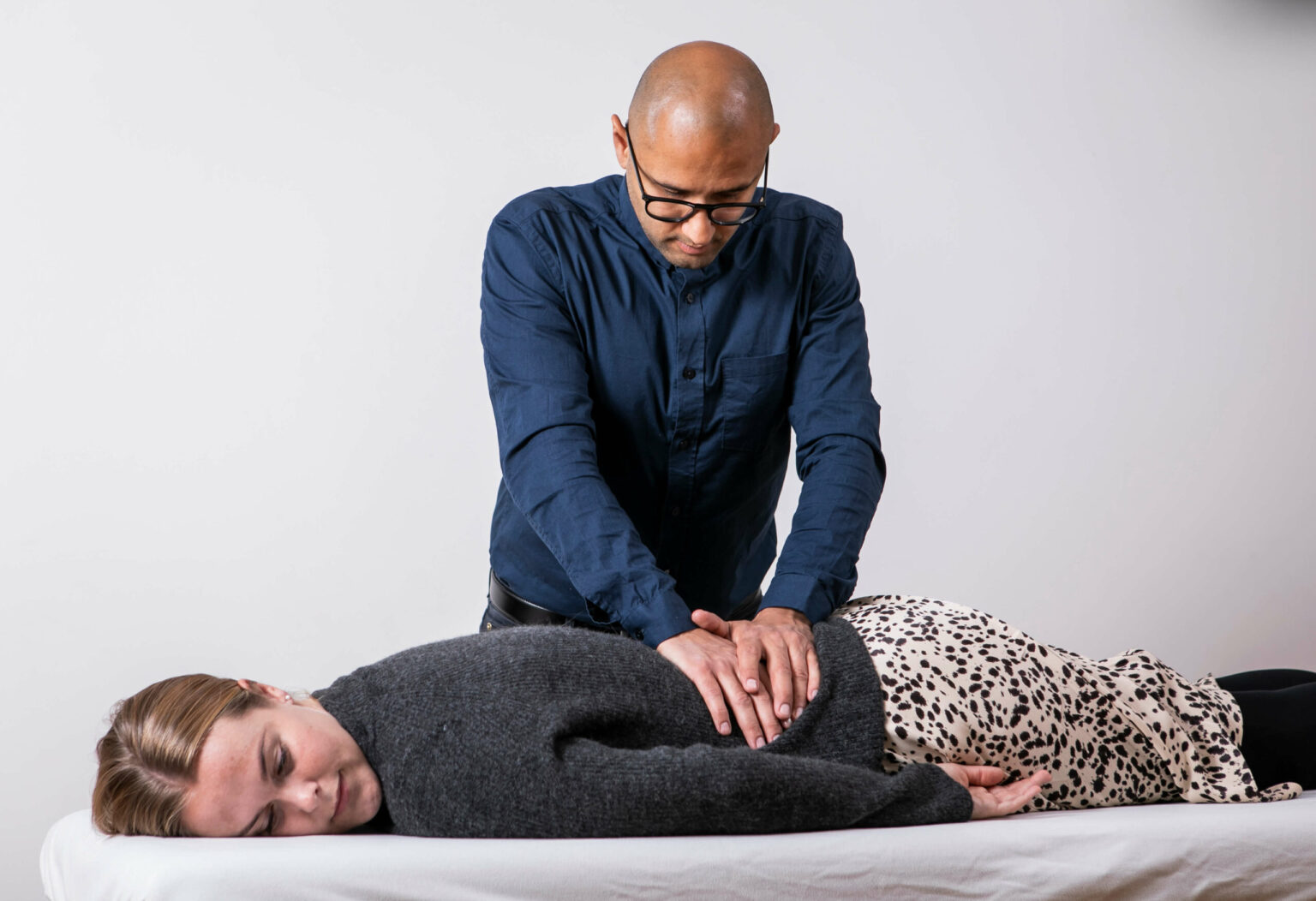
Spinal stenosis
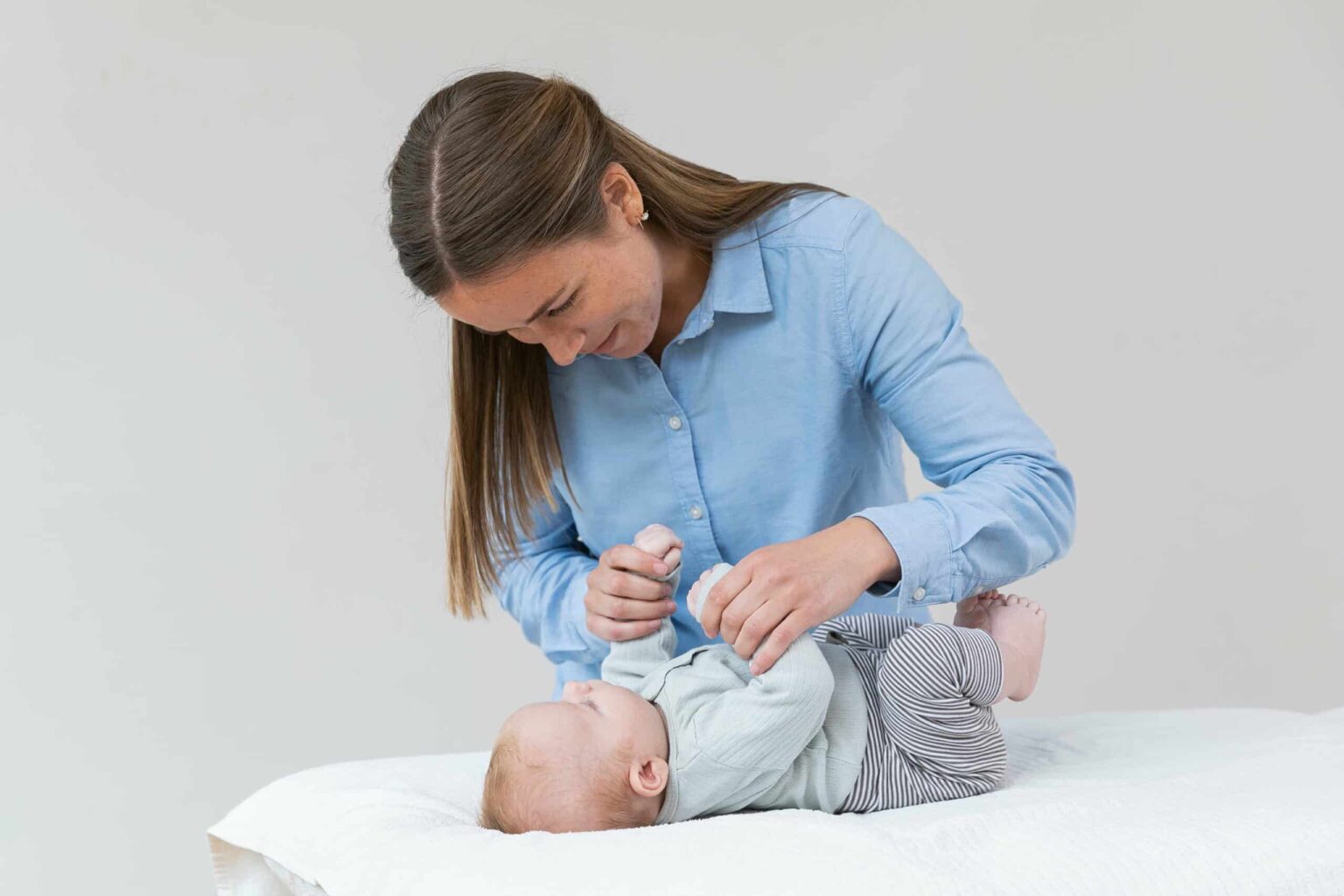
Hypermobility in babies and children

Muscle tension or imbalances in babies and children
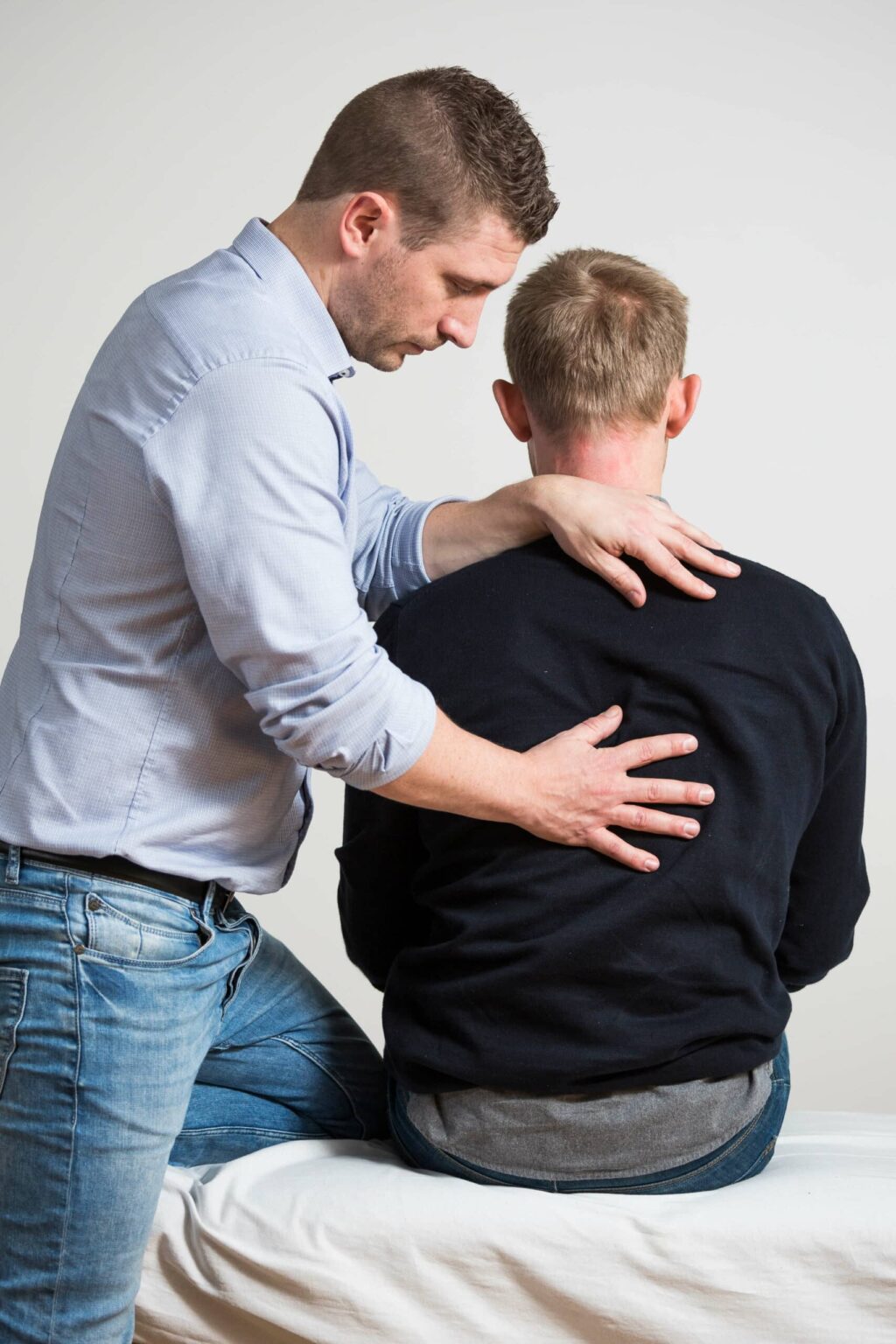
Modic Changes
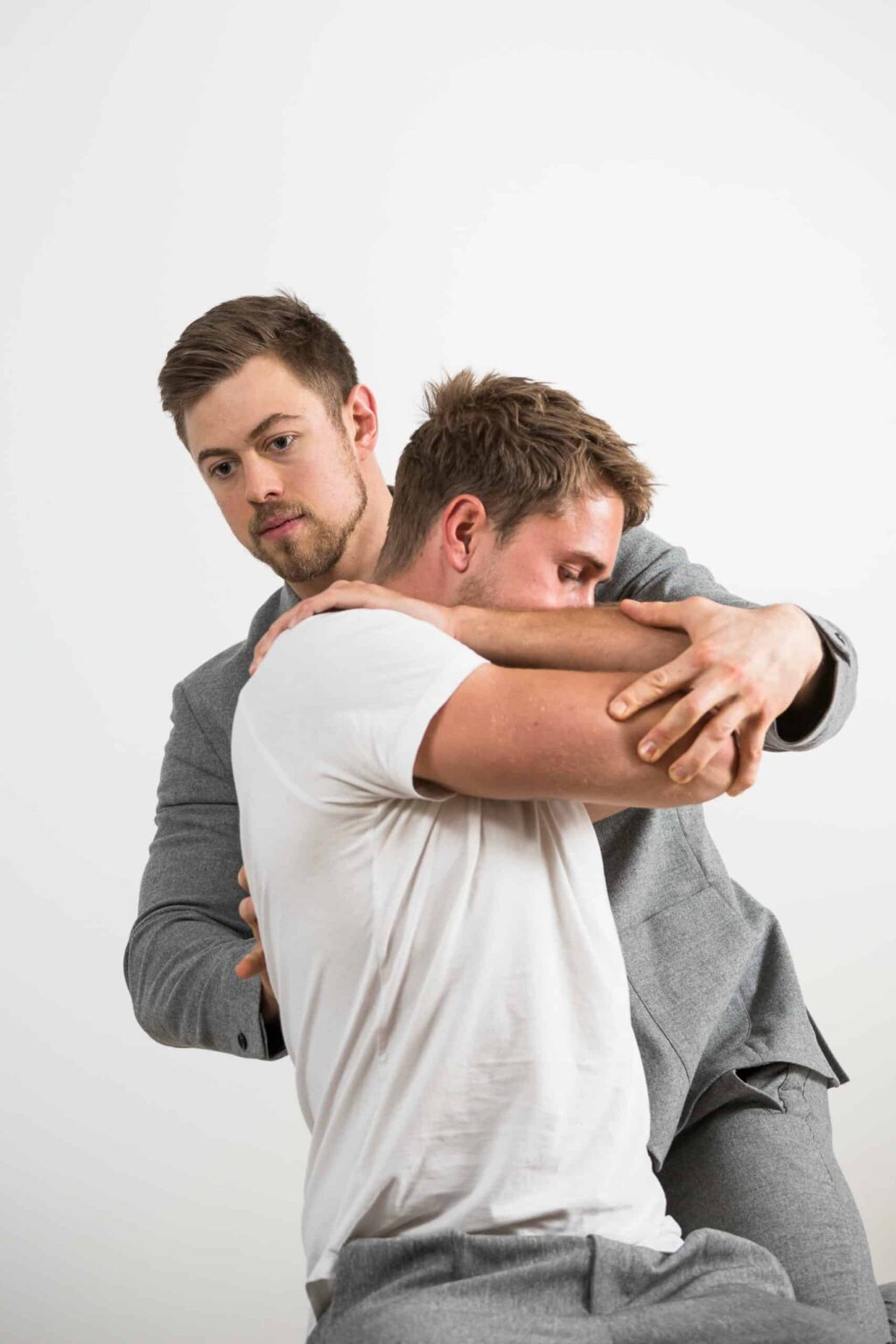
Disc herniation
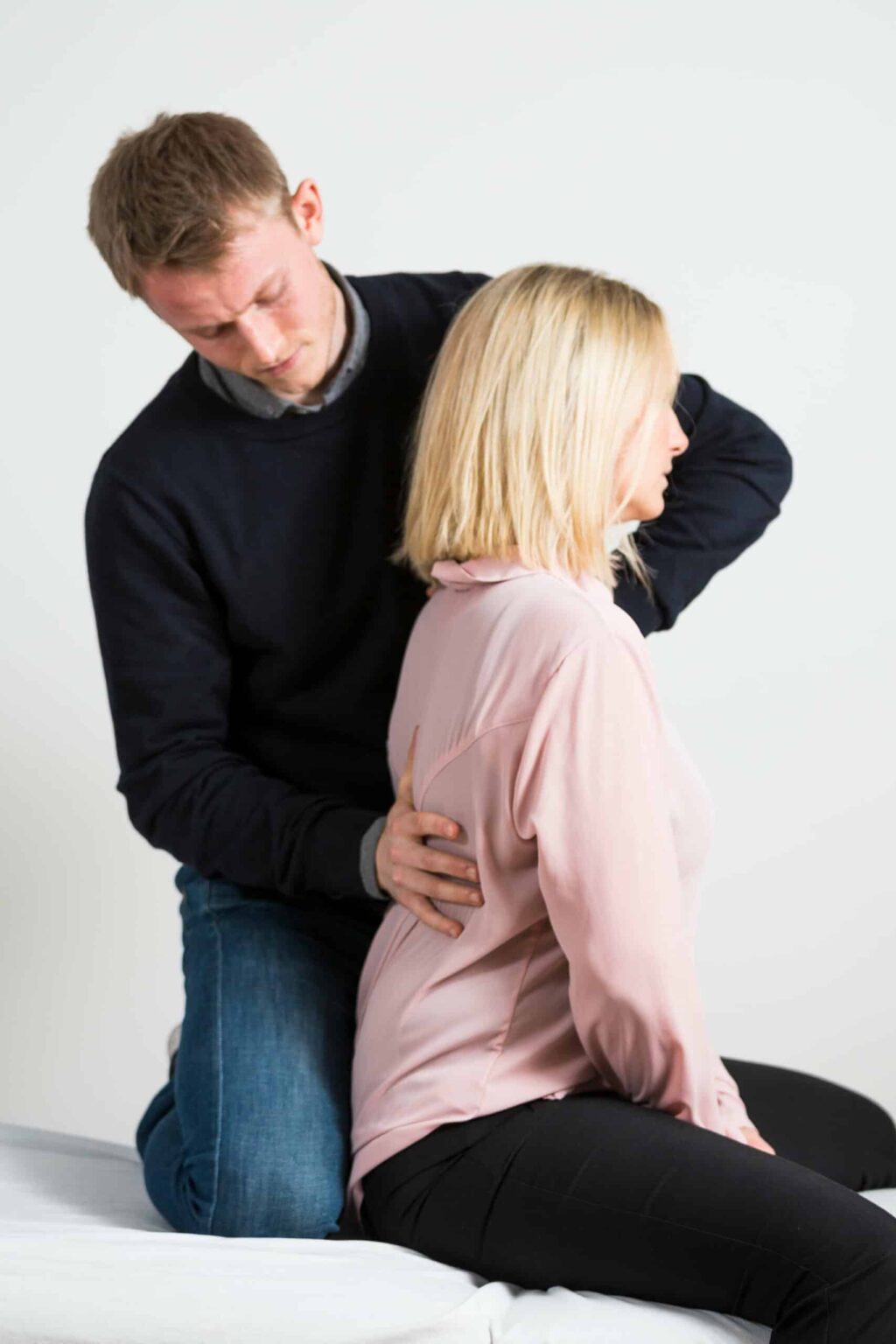
Spinal arthritis
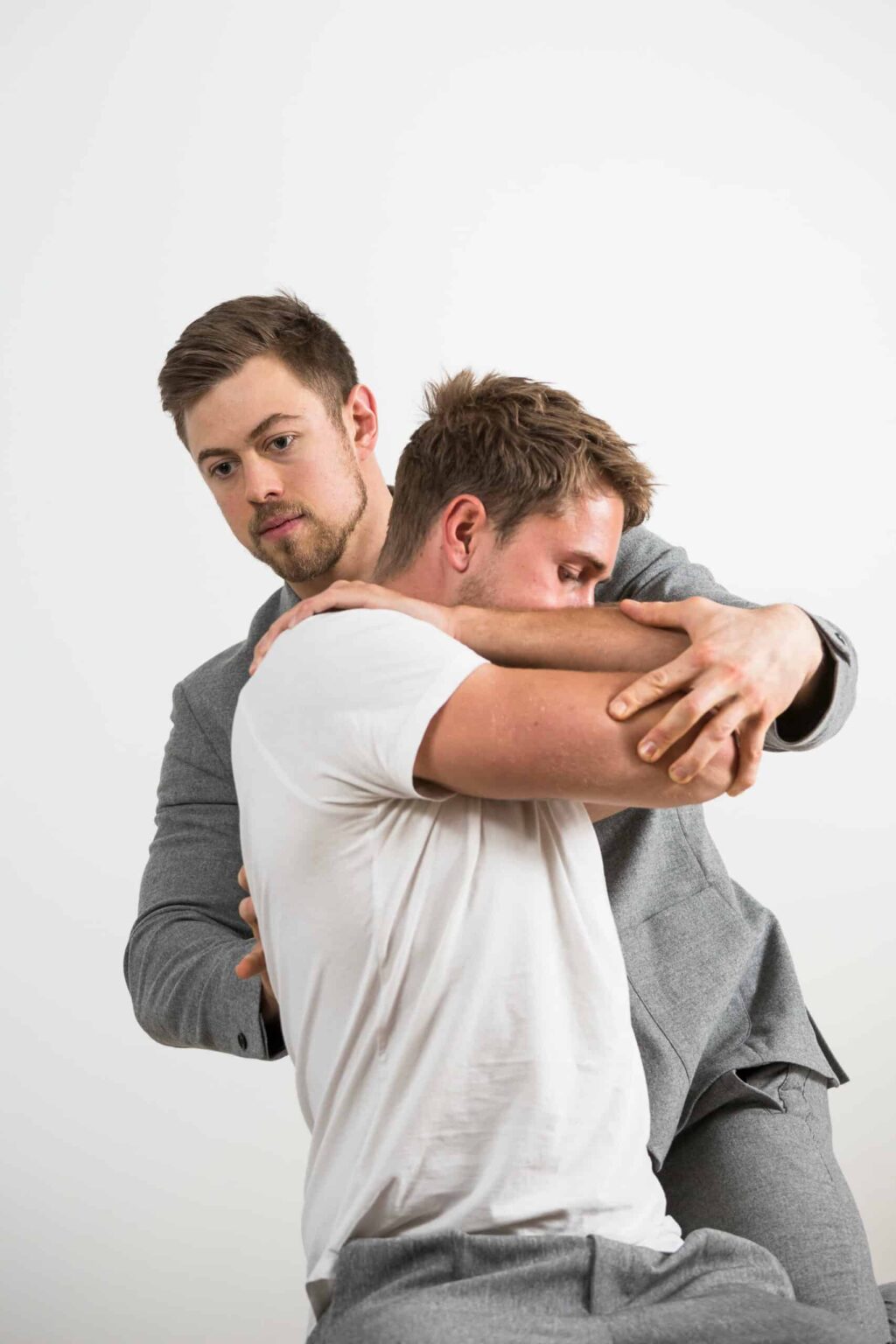
Winged scapula

